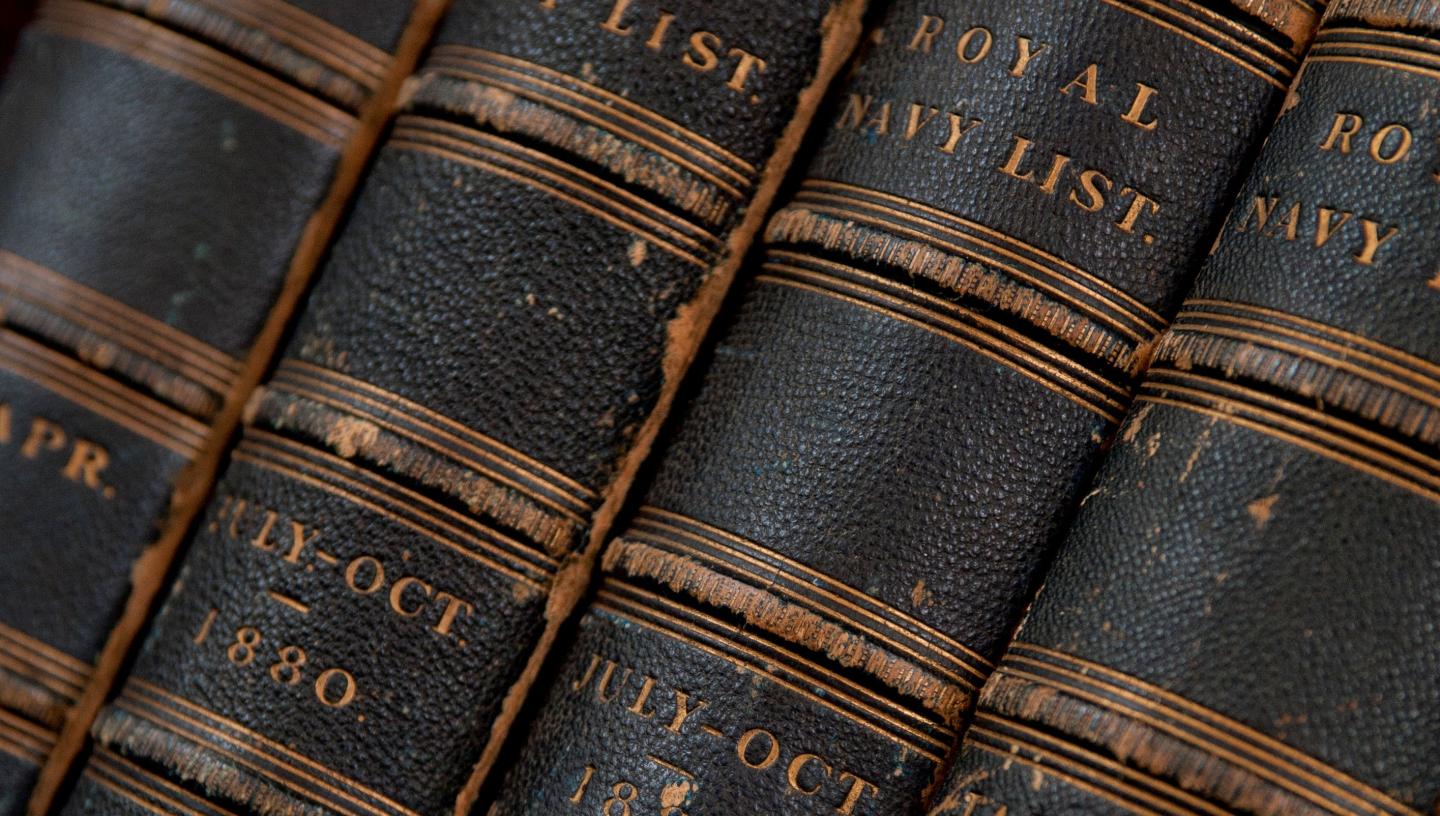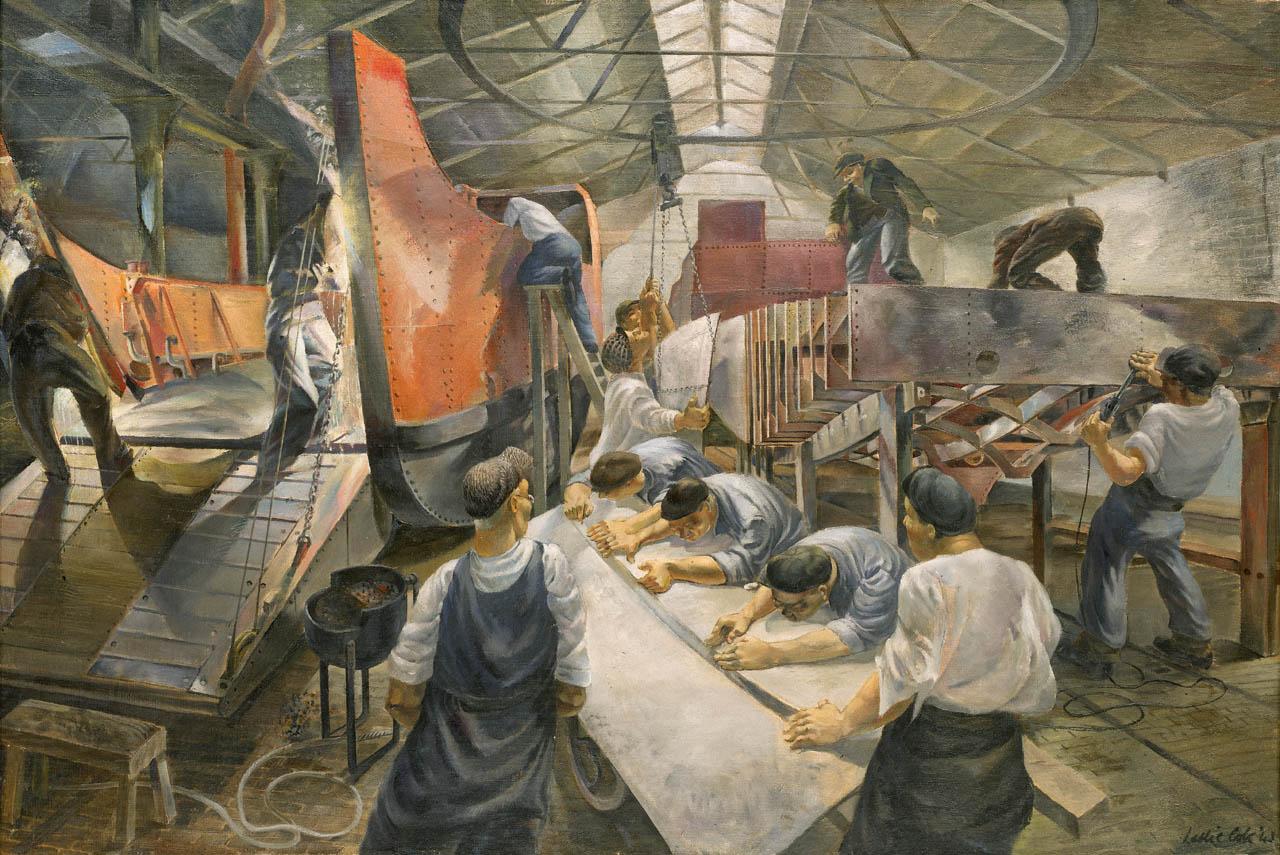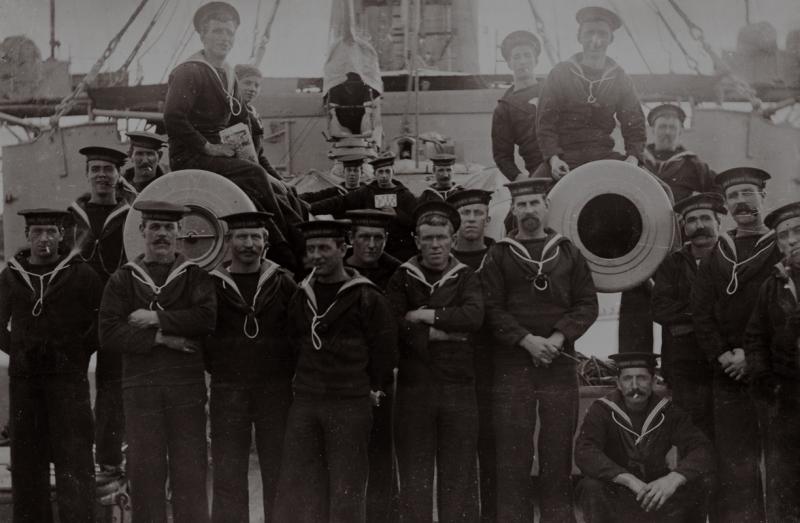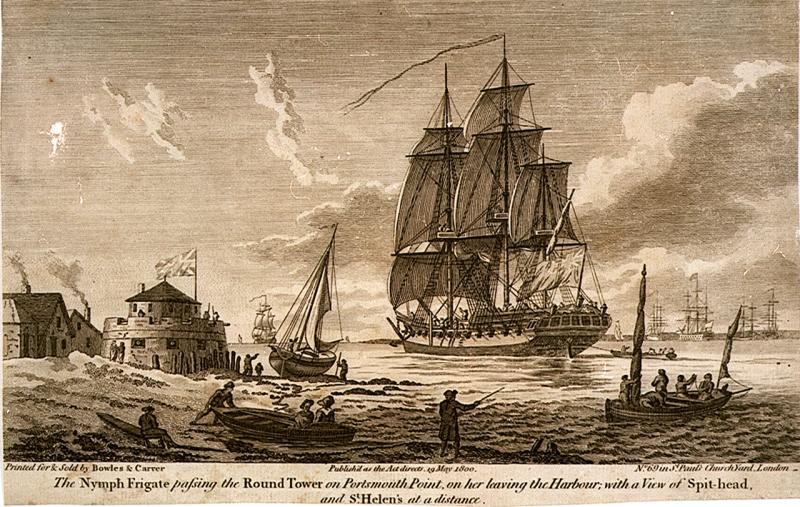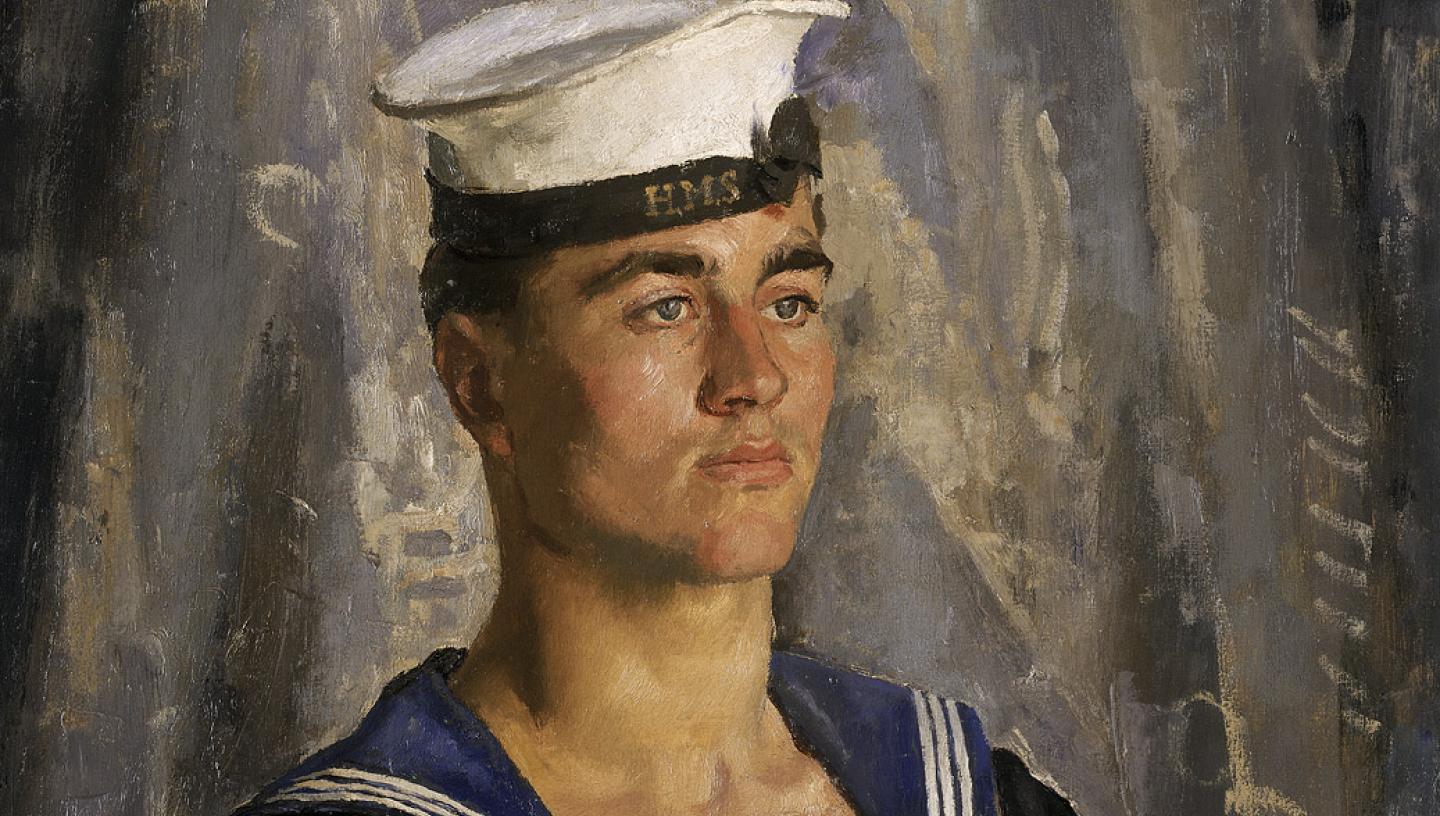
Sophie Warburton explores the story behind a portrait in Royal Museums Greenwich's collection and their connection with the sitter.
I have chosen for the subject of my blog the painting we have in the art collection called The Sailor, which features on the cover of the new Royal Museums Greenwich publication The Art of Naval Portraiture.
I selected this not only because I think it is a beautiful and striking work of art, but also because it means a lot to me personally since finding out the subject is my first cousin twice removed!
Luckily my father and uncle have been delving into family history since retiring, and so I am fortunate enough to be able to share some of the subject’s real-life story along with some information about the artist and how the painting came about.
The sitter
Maurice Alan Easton was born in 1923 in the Lincolnshire port of Grimsby, the eldest son of Gilbert and Evelyn. In the 1939 England and Wales Register he is listed as a junior clerk estate agent in Folkstone. At the time he was called up in 1941, at the age of eighteen, he is listed as a railway bookings clerk; he became a ‘hostilities-only’ rating.
The portrait shows Maurice in a seaman’s uniform and naval cap with the anonymous ‘HMS’ tally band. This was a wartime precaution to prevent the enemy knowing precise ship movements. On his right arm he is wearing the radio communicator’s badge, as he was a telegraphist.
The artist
The artist was Henry Marvell Carr (1894-1970), who had been a painter of the Second World War in England since 1939, having been commissioned to paint scenes of bomb damage in London. His own home and studio were destroyed in the Blitz.
Carr painted portraits of many eminent people connected with the war, including General Eisenhower, His Highness the Bey of Tunis, and Admiral Sir Andrew Cunningham, but he also chose as his subjects the ordinary and unknown.
The National Maritime Museum is fortunate enough to have several works by Carr, including BHC1558 (pictured below) from this period.
The story
From 1943 Carr was a full-time salaried War Office artist, posted with the First Army in North Africa and Italy. Maurice’s portrait is dated 1944 and was painted at the naval barracks at Naples. The Sunday Dispatch from 1946 gives Maurice’s own account of how the painting came about:
I was staying at a hotel in Naples, waiting for a draft to Corsica, and one day when I walked into the place I saw a line of matelots being inspected by Captain Carr. It looked to me like an identification parade so I beat a hasty retreat upstairs. I hadn’t got very far, when a voice called out: “that’s the man I want.”
It's unlikely Maurice received any payment for the sitting.
Back in London after the war, the simply titled The Sailor was shown at the Art of the Nation: War Artists Advisory Committee Collection War Artists at Sea exhibition, which was held at Suffolk Street Galleries, London, without any reference to Maurice Eastman. The exhibition was opened by the First Lord of the Admiralty on 29 January 1946.
Maurice only learnt about the exhibition when his portrait was used as a poster for the show, which he saw by chance, on London advertising billboards.
The committee
The War Artists Advisory Committee (WAAC) led by the National Gallery’s Director, Sir Kenneth Clark, had been set up by the Ministry of Information in 1939 with the aims of commissioning art that could serve the war effort through documenting the conflict, raising morale, and promoting national culture.
We hold several items in the Library and Archive, concerning the WAAC:
- The war at sea
- British artists and the Second World War
- WW2: war pictures by British artists
- Exhibition of national war pictures and a few pieces of sculpture
- Art and the war at sea 1914-45
The Committee purchased around 6000 works of art from over 400 artists before being ultimately dissolved, and in 1947 its collection was distributed throughout museums and institutions, which is how Maurice’s portrait ended up in Greenwich.
The Museum has several works that belonged to the Committee including Leslie Cole's Landing Craft Mechanized (BHC1560), currently on display in the Queen's House.
The portrait
It was not until nearly 30 years later in 1975 that the Museum learnt the identity of the sitter in The Sailor, when a press cutting from the previously mentioned Sunday Dispatch was sent to the Museum by a correspondent who had known Maurice. His name was finally acknowledged with the portrait.
Maurice married Kathleen Mackay in Gloucester in 1969. She died in 2005 in Wiltshire, followed by Maurice in 2006. They are both buried in Westbury Cemetery, Wiltshire.
The painting currently hangs in the Queen’s House, and it was wonderful to see my mother getting re-acquainted with Maurice!
The Library
Here at the Caird Library, we have a wonderful selection of books and sources to help you to research your own maritime family history. To get you started, we have online research guides including on tracing your family history from maritime records.
We also have a number of helpful books on open access in the Library; these are available for anyone to consult, you just need to register for a one-day ticket, which requires one form of identification.
The Art of Naval Portraiture is available in the Caird Library's Reading Room on our open access shelving, so there's no need to request in advance to view.
